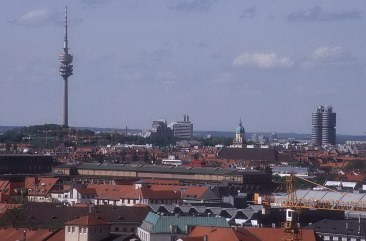German - History of the language and why you should learn it
Travel The World
The German language is among the four leading international languages of the world. English takes first place. French follows at a considerable distance, while German takes third place, above Spanish and Portuguese. Besides being the language of Germany proper, German is spoken in Austria, Belgium and in the majority of the Swiss cantons, and by minorities in some East-European countries. There are, in addition, German-speaking communities in other parts of the world.
Thus, the man or woman who is equipped with even a slight working knowledge of German has the means of direct contact with a variety of people, cultures, countless businesses worldwide, etc. And in learning German, one should not loose sight of the fact there lies a whole literature. In the writings of Goethe, Schiller, Heine, Thomas Mann and other great figures of the German-speaking world of letters there is a rich field for exploration.

Old High German and Old Low German, in use until about the year 1050 and sometimes called Old Saxon, are very near to old English or Anglo Saxon. The language of those times, however, is as alien to the German of today as is Anglo Saxon to the modern English reader.
The next staged in the development of the language produced Middle High German (and Middle Low German), a form which lasted until the end of the Middle Ages. Modern High and Low German date from the time of Martin Luther, about 1500, although they had still to undergo many changes.
Low German, still spoken in many parts of North Germany and in the West, represents an older stage in the develop- ment of the language and has many words which are identical with the respective English expressions: Water, for instance (Wasser, in German). The people of the Waterkante are the inhabitants of the maritime districts who speak Low German, or Plattdeutch as it is called in High German.
Low German is by no means confined to the lower classes of the population; it has a rich literature throughout the ages, and a number of great German writers, such as Fritz Reuter, the novelist, and the South Schleswig poet Klaus Groth, wrote in Low German dialects.
There are many different dialects in both Low and High German, and some of them, like the Swiss High Alemannic, are regarded almost as languages of their own.
High German, however, mainly under the impact of the Bible translation of Martin Luther, became eventually the dominant language. It reached it's culmination in the 18th century, and the literary language of the great German classics, Klopstock, Lessing, Herder, Goethe and Schiller, created finally a unified standard.